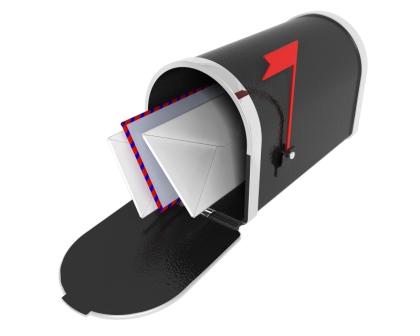I had the privilege of guest lecturing at Tufts University in late February to a class titled “Social Marketing.” I focused my presentation on green marketing and sustainability, with a particular emphasis on the importance of transparency. In addition, I spent some time on product lifecycle management, which I’ve been interested in for a while, and have been learning a lot more about through my membership on the Product Stewardship Institute Advisory Council.
I’m pleased to include a selection of slides that I discussed in class below:
I provided a best practice example, which I wrote about in July 2009, about the use of eco-logos and statistics on the outside envelope of a fundraising appeal by the Democratic Senatorial Campaign Committee, which was signed by former Vice President Al Gore.
I then went on to discuss an example of greenwashing by a major company, SC Johnson, in their creation of Greenlist. Terrachoice, a leading environmental marketing agency, defines greenwashing as “the act of misleading consumers regarding the environmental practices of a company or the environmental benefits of a product or service.” SC Johnson created the program in 2001 and started putting its Greenlist logo on products in 2008 to indicate that one of their products met certain environmental standards. The problem was that SC Johnson made the logo look very official, which gave many consumers the idea that it was rated by an outside organization, which it was not. Two class action lawsuits were filed against SC Johnson, which they settled in 2011, by agreeing not to use the Greenlist logo on Windex moving forward. Here’s an excellent article on the settlement by GreenBiz. Here’s a quote from Fisk Johnson, SC Johnson’s chairman and CEO, that sums up the issue of greenwashing very well: “In retrospect. we could have done a better job at being more transparent and clearer with our label and what it meant.”
Following this discussion, I reviewed Poland Spring’s 5-gallon “Eco Sense Bottle” that it unveiled in 2010. When I first saw the bottle on one of my office’s water coolers, I did some investigating, and wrote an article about it, which is still the most read post on my blog over the past 5 years. The reason I wrote about the bottle was that it had an environmental logo with no explanation of what the logo meant. I spoke with a representative who told me that the bottle used less plastic and was easier to recycle. I did not believe this was greenwashing, but rather, as I wrote 2 years ago, “a failure of a major brand to provide clarity on its green claims…Poland Spring went to the trouble of trademarking ‘eco-sense’ and creating a special logo for the term, but they didn’t take the extra step of providing consumers an explanation of what the term means.”
The next part of the discussion focused on product lifecycle management and the importance of reducing the use of resources in packaging. To create these slides, I was lucky to get help from Scott Cassel, the founder and CEO of Product Stewardship Institute. The example I provided was Staples, and its pioneering computer “take back” program, which, according to the company, allows consumers to “securely recycle your end-of-life technology.” These programs prevent a large number of devices from being thrown away, reducing the presence of hazardous materials in the waste stream. Staples was the first major retailer to offer such a program, and it had a significant impact on its industry; Best Buy, Office Depot and a range of other firms have followed suit. Not only is this good for the environment, and convenient for consumers, but it has been good for Staples as well – studies have shown that this program increased consumer loyalty to the chain.
I closed out the formal part of the program with a discussion about packaging, and how reducing the resources needed to make products can have a significant impact on a company’s brand. Over the last decade, Wal-Mart, the leading retailer in the world, has suffered a number of public relations issues, with many focused on its treatment of workers. In addition, very few retailers have had a more significant positive environmental impact on their industry or suppliers than Wal-Mart. There is a wide array of information on Wal-Mart’s sustainability efforts on its website, including its creation of a Sustainability Index, its efforts to create zero waste, as well as its aggressive efforts to reduce energy use and greenhouse gas emissions. I focused the conversation on one example of Wal-Mart exerting its influence on a supplier to effect significant change in its industry. The supplier was Tide, and the result was a packaging revolution. Several years ago, Wal-Mart set a goal of only selling concentrated liquid laundry detergent in all of its U.S. and Canadian stores. The program was a success, and the entire industry has been transformed. In addition, because of this and a number of other initiatives, consumers have easier access to more environmentally-friendly products, and Wal-Mart’s reputation has been partially rehabilitated.
The students, all of whom are undergraduate students at Tufts University, had a wide range of interesting and insightful questions and comments. I was honored to have had the opportunity to spend the evening with them!





 Last month,
Last month,